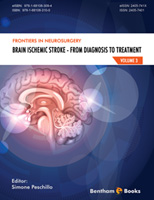Abstract
Brain function and viability strictly depend on blood flow. In case of arrest of the cerebral circulation the brain cells would survive for only a few minutes. In the perinecrotic area, where a residual blood flow is present, the brain tissue may survive for a few hours or probably days to eventually die or regain function. Both innate and adaptive immune responses, together with oxidative stress and excitotoxicity activate a damage maturation process. The interplay of the events within the neurovascular unit includes both deleterious and protective mechanisms. The complexity of the postischemic damage offers a number of potential therapeutic opportunities. The same complexity, however, makes it likely that each individual, potentially therapeutic, approach embraces antithetical effects, by affecting both the deleterious and protective mechanisms that drive the maturation process. The perinecrotic area seems therefore to express a heterogeneous scenario, where a patchy pattern reflects different pathologic states, depending on the intensity of the ischemic insult and on both local and systemic variables.
Keywords: Cerebral blood flow, Hypothermia, Metabolism, Necrosis, Neurovascular unit, Post ischemic inflammation, Programmed cell death.






















